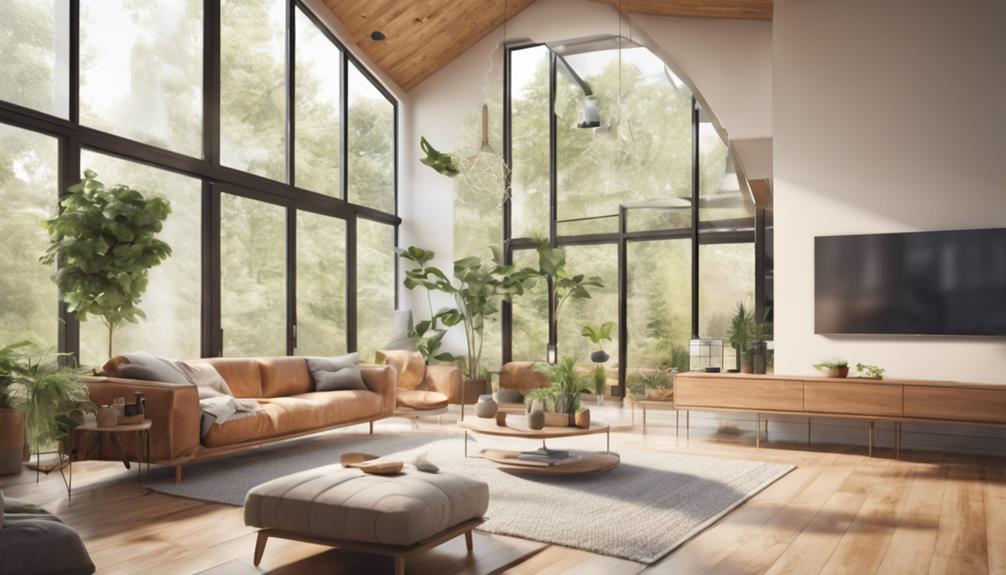
Understanding Solar Panels on Flat Roofs
Solar panels on flat roofs have gained significant attention in recent years due to their efficiency and practicality. Unlike traditional sloped roofs, flat roofs offer a unique opportunity for solar energy installation. With a flat surface, homeowners and businesses can maximize sunlight exposure and optimize energy production. This blog post will explore the benefits, installation considerations, and maintenance of solar panels on flat roofs, ensuring you have all the information needed to make an informed decision about solar energy.
The Benefits of Installing Solar Panels on Flat Roofs
One of the primary advantages of solar panels on flat roofs is their ability to adjust the angle of installation. Flat roofs allow for the use of adjustable mounting systems, which can tilt the panels to capture maximum sunlight throughout the day. This can lead to increased energy production compared to panels installed on sloped roofs, where the angle is often fixed. Additionally, flat roofs often have less shading from nearby trees and buildings, further enhancing energy efficiency. Moreover, utilizing a flat roof for solar panels can free up ground space for other uses, such as gardens or outdoor living areas.
Installation Considerations for Solar Panels on Flat Roofs
When considering solar panels on flat roofs, it’s essential to evaluate several installation factors. First, roof material plays a crucial role in determining the best mounting system. Common flat roof materials include rubber (EPDM), PVC, and TPO, each requiring specific mounting solutions to ensure a secure and watertight installation. Additionally, it’s vital to assess the structural integrity of the roof. Flat roofs must be able to support the weight of the solar panels, mounting hardware, and additional snow load in colder climates. Consulting with a structural engineer or a qualified solar installer can provide valuable insight into your roof’s readiness for solar panel installation.
Choosing the Right Solar Panel System for Your Flat Roof
Selecting the right solar panel system for your flat roof involves understanding your energy needs and the space available for installation. There are various types of solar panels, including monocrystalline, polycrystalline, and thin-film, each with its advantages and disadvantages. Monocrystalline panels are known for their high efficiency and sleek appearance but can be more expensive. Polycrystalline panels offer a more budget-friendly option, while thin-film panels are lightweight and flexible, making them suitable for certain flat roof applications. Evaluating your energy consumption, budget, and aesthetic preferences will help you choose the best solar panel system for your flat roof.
Financial Incentives and Return on Investment for Solar Panels on Flat Roofs
Investing in solar panels on flat roofs can be financially beneficial in the long run. Many governments and local authorities offer financial incentives, such as tax credits, rebates, and grants, to encourage solar energy adoption. These incentives can significantly reduce the upfront costs of installation, making solar panels more accessible. Additionally, the return on investment (ROI) for solar panels is often impressive. Homeowners can save on their electricity bills while increasing their property value. According to various studies, homes with solar panels can sell for up to 20% more than those without, making it a wise investment for the future.
Maintaining Solar Panels on Flat Roofs
Proper maintenance is crucial for ensuring the longevity and efficiency of solar panels on flat roofs. Unlike sloped roofs, flat roofs can accumulate debris, such as leaves and dirt, which can affect the panels’ performance. Regular inspections and cleaning are essential to remove any obstructions that may block sunlight. It is advisable to schedule professional cleanings at least once or twice a year, depending on your geographic location and surrounding environment. Additionally, monitoring the system’s performance through an online portal or app can help detect any issues early on, ensuring optimal energy production.
Common Misconceptions About Solar Panels on Flat Roofs
Despite the growing popularity of solar panels on flat roofs, several misconceptions persist. One common myth is that flat roofs do not receive enough sunlight for solar panels to be effective. In reality, flat roofs can capture ample sunlight due to their flexibility in panel positioning. Another misconception is that solar panels are too heavy for flat roofs. As long as the roof is structurally sound, modern solar panel systems are designed to be lightweight and safe. Educating yourself about these myths can help alleviate concerns and encourage more homeowners and businesses to consider solar energy.
Conclusion: Embracing Solar Energy for a Sustainable Future
In conclusion, solar panels on flat roofs present a compelling opportunity for homeowners and businesses to harness renewable energy effectively. With numerous benefits, including increased energy production, financial incentives, and the potential for property value appreciation, the advantages of solar energy are hard to ignore. By understanding the installation considerations, maintenance requirements, and common misconceptions, you can confidently navigate the solar energy landscape. As we move towards a more sustainable future, embracing solar energy through flat roof installations is a step in the right direction for both the environment and your wallet.





